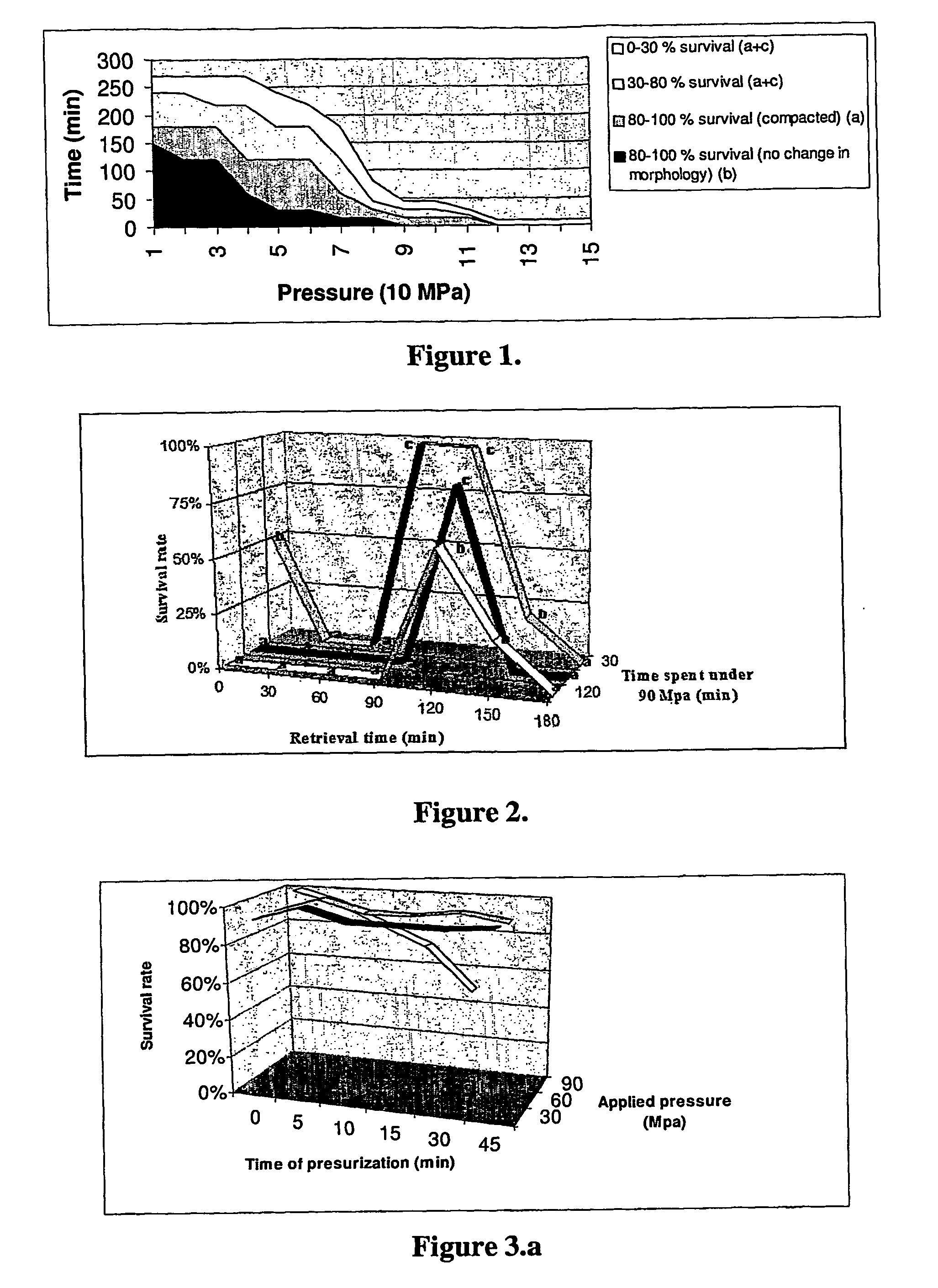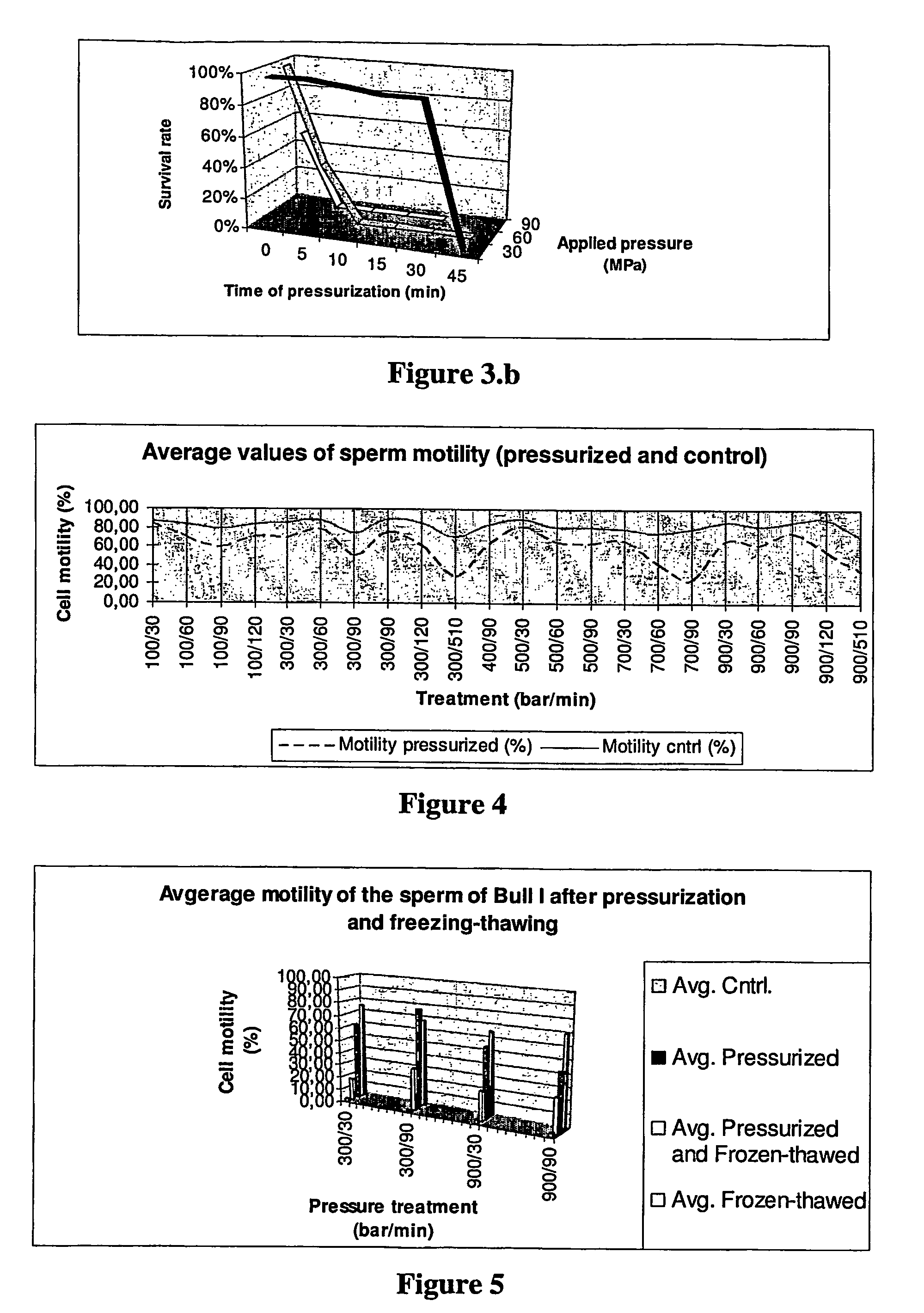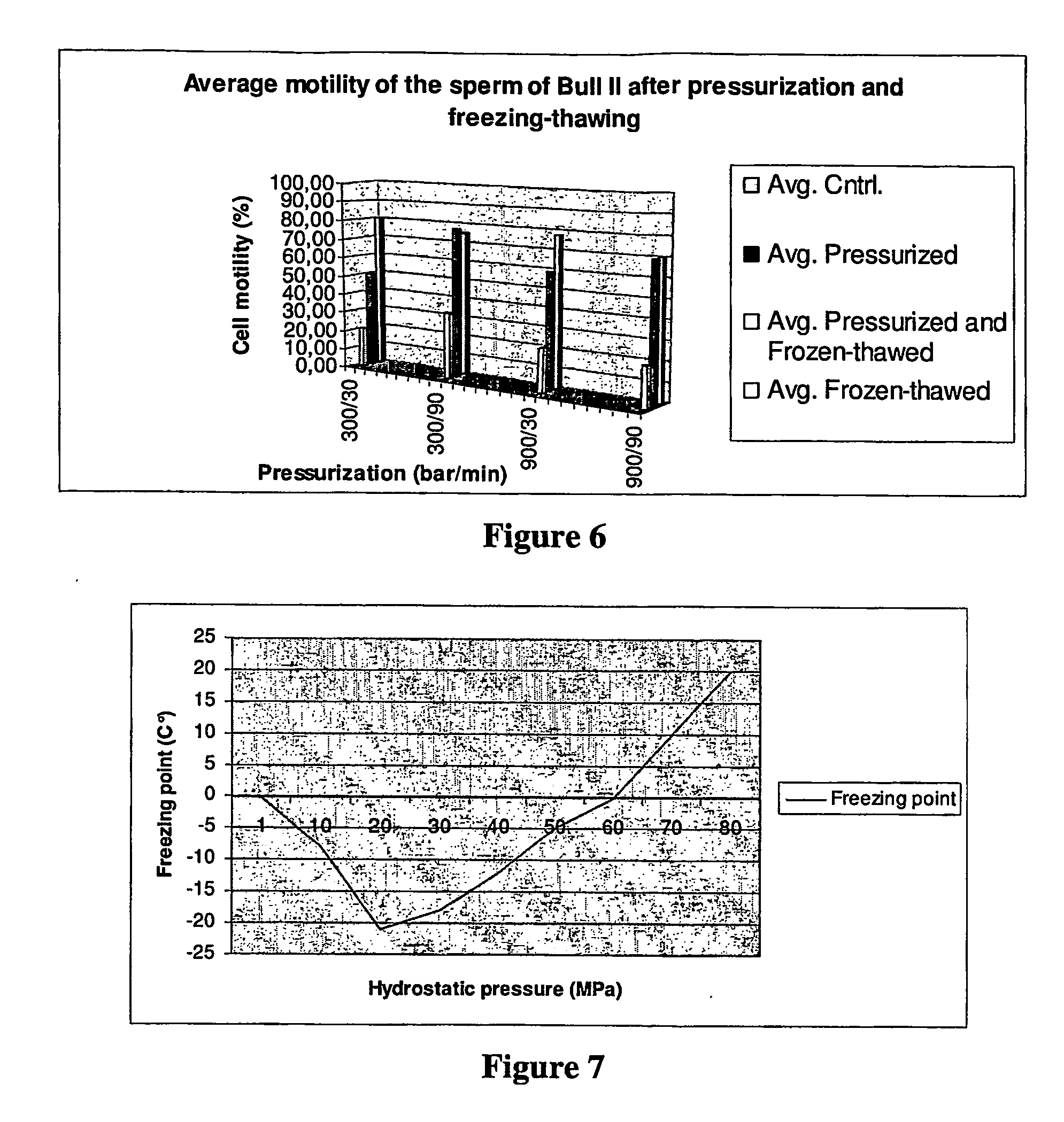Post-thaw survival of chryopreserved biological material by hydrostatic pressure challenge
- Summary
- Abstract
- Description
- Claims
- Application Information
AI Technical Summary
Benefits of technology
Problems solved by technology
Method used
Image
Examples
example 1
Survival of Mouse Embryos at Different Pressures on Room Temperature
[0110] In the present experiments embryos were exposed to different hydrostatic pressures from 10 to 150 MPa (by 10 MPa increments) for various times, between 1 sec to 300 nun, at room temperature.
[0111] The treatment exceeding a certain amount of pressure and time (FIG. 1) caused reversible morphological changes. The expanded blastocysts compacted inside the zona pellucida: the blastocoel disappeared, the size of the blastomeres reduced but their structural integrity showed no alteration. After 4-5 hours of in vitro culture these blastocysts re-expanded and hatched from the zona pellucida in 24 hours (a). Embryos receiving less impact showed no morphological change and hatched within 24 hours of in vitro culture (b), while embryos challenged with a greater impact did not re-expand from the compacted stage and disintegrated within 2 hours, or were already disintegrated after decompression (c) (FIG. 1).
[0112] For ...
example 2
Survival of Mouse Embryos after Using Different Decompression Profiles
[0115] In the present experiment we investigated whether the survival rate of pressurized embryos could be improved by gradual decompression.
[0116] Expanded blastocysts were kept at 90 MPa for 30, 60 and 120 minutes, (where the survival rate at room temperature with instant decompression was 50%, 0% and 0%, respectively) then the pressure was gradually released in 9 steps for 30, 60, 90, 120 and 150 minutes. The results show that survival can be significantly improved by gradual decompression, which has an optimal range depending on the time the embryos spend under pressure. The optimal come-up time rose the longer the time embryos spent under pressure. The maximal survival rate, achievable by decompression, reduced as the time of the pressurization increased (FIG. 2).
[0117] At in vitro evaluation 54 ‘survived’ and 35 ‘dead’ embryos were transferred to 9 recipients. Out of 54 ‘survived’ embryos 47 implanted (87...
example 3
Survival of Mouse Embryos at Different Pressures at Low Temperature
[0118] In this experiment the role of temperature was investigated on the survival capacity of the pressurized embryos.
[0119] 30, 60 and 90 MPa pressure was applied to embryos for 1 sec, 5, 10, 15, 30 and 60 min. at low temperature (0° C.). While non-pressurized embryos can live at 0° C. for a substantial amount of time without any significant change in their survival, simultaneous pressure treatment with 30, 60, 90 MPa was lethal for 100% of the embryos after 45, 10, 5 min, respectively. A significantly reduced survival rate was observed with the embryos pressurized at low temperature compared to the groups treated at room temperature (Pa, 3b).
[0120] At in vitro evaluation 40 ‘survived’ and 28 ‘dead’ embryos were transferred to 7 recipients. out of the 40 ‘survived’ embryos 34 implanted (85%), and 0 embryos implanted out of the 28 ‘dead’ embryos at the 18 days count. The implantation rate of the ‘survived’ group ...
PUM
 Login to View More
Login to View More Abstract
Description
Claims
Application Information
 Login to View More
Login to View More - R&D
- Intellectual Property
- Life Sciences
- Materials
- Tech Scout
- Unparalleled Data Quality
- Higher Quality Content
- 60% Fewer Hallucinations
Browse by: Latest US Patents, China's latest patents, Technical Efficacy Thesaurus, Application Domain, Technology Topic, Popular Technical Reports.
© 2025 PatSnap. All rights reserved.Legal|Privacy policy|Modern Slavery Act Transparency Statement|Sitemap|About US| Contact US: help@patsnap.com



